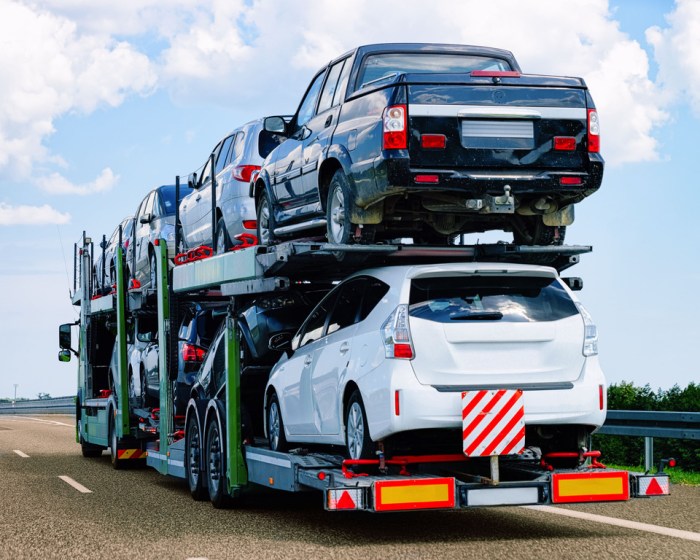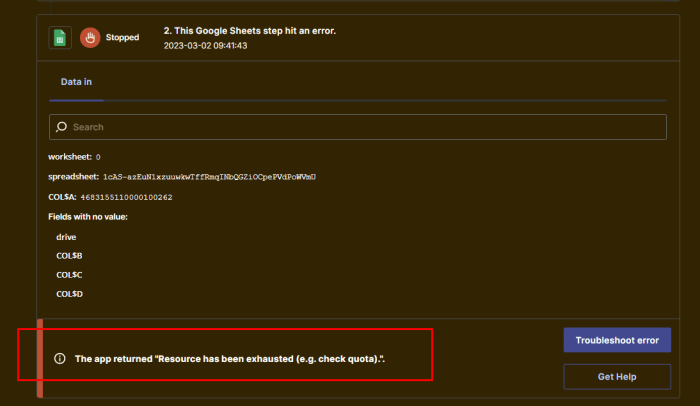Understanding the Local Car Shipping Market
The local car shipping market caters to individuals and businesses needing vehicle transportation within a relatively limited geographical area, typically within a single state or a small cluster of neighboring states. This contrasts with long-distance auto transport, which involves cross-country or even international shipments. Understanding this market requires examining its customer base, pricing factors, transportation methods, and the regulatory framework that governs it.
Typical Customer Profile for Local Car Shipping Services
Local car shipping services attract a diverse clientele. Common customers include private individuals relocating within a city or region, needing to transport a vehicle for repairs or maintenance, or moving a car to a storage facility. Businesses also utilize these services, such as car dealerships transporting vehicles between lots or auction houses moving purchased cars to their premises.
The shared characteristic among these diverse users is the need for efficient and cost-effective short-distance vehicle transportation.
Key Factors Influencing the Pricing of Local Car Shipping
Several factors influence the cost of local car shipping. Distance is a primary determinant; shorter distances naturally result in lower prices. The type of vehicle being transported – size, weight, and condition – also plays a significant role. Larger, heavier, or damaged vehicles require more specialized handling and may incur higher costs. The chosen transportation method (open or enclosed carrier) also impacts the price, with enclosed transport generally being more expensive.
Finally, the level of demand and the availability of carriers at the time of booking can fluctuate pricing. For example, during peak moving seasons, prices might be higher due to increased demand.
Comparison of Local Car Shipping Methods: Open vs. Enclosed Transport
Local car shipping primarily utilizes open or enclosed carriers. Open transport involves shipping the vehicle on an open trailer, exposed to the elements. This is generally the more economical option, suitable for vehicles in good condition. Enclosed transport, on the other hand, utilizes an enclosed trailer, protecting the vehicle from weather and potential damage. This method is preferred for high-value, classic, or newly purchased vehicles where protection is paramount, though it comes at a higher cost.
The choice depends on the customer’s budget and the vehicle’s condition and value.
Regulatory Landscape Governing Local Car Shipping Businesses
Local car shipping businesses are subject to various regulations, primarily at the state level. These regulations often involve licensing and insurance requirements. Carriers must obtain the necessary permits and maintain adequate insurance coverage to protect both themselves and their clients. Additionally, they may be subject to Department of Transportation (DOT) regulations, particularly if operating across state lines, even for relatively short distances.
Compliance with these regulations is crucial for maintaining legal operation and ensuring customer safety and satisfaction. Failure to comply can lead to penalties and legal repercussions.
Finding and Choosing a Local Car Shipping Provider

Selecting a reliable local car shipping provider is crucial for a smooth and stress-free vehicle relocation. This process involves careful research, comparison, and due diligence to avoid potential problems and ensure your vehicle arrives safely and on time. Several factors need consideration, including price, insurance, and the provider’s reputation.
Essential Questions for Potential Providers
Asking the right questions upfront can save you significant time and potential headaches. These questions will help you assess a provider’s capabilities and commitment to customer satisfaction. Thorough inquiry is essential to ensure a positive experience.
- What is your total price, including all fees and taxes?
- What type of insurance coverage do you offer, and what are its limitations?
- Can you provide references or testimonials from past clients?
- What is your estimated delivery timeframe, and what factors could affect it?
- What is your process for handling damages or delays?
- What is your company’s licensing and insurance information?
- What is your procedure for vehicle pickup and drop-off?
- Do you have a written contract outlining the terms of service?
Comparing Local Car Shipping Providers
A comparison table is a helpful tool for objectively evaluating different providers based on key criteria. This allows for a more informed decision-making process. Remember to obtain multiple quotes before making a final choice.
| Provider Name |
Price Quote |
Insurance Coverage |
Customer Reviews |
Estimated Delivery Time |
| Acme Auto Transport |
$500 |
$10,000 liability |
4.5 stars (based on 100 reviews) |
3-5 business days |
| Best Car Shipping |
$450 |
$5,000 liability |
4 stars (based on 50 reviews) |
2-4 business days |
| Reliable Relocation |
$550 |
Full coverage available |
4.8 stars (based on 200 reviews) |
4-6 business days |
Common Scams and Fraudulent Practices
Unfortunately, the car shipping industry is susceptible to scams. Awareness of these practices is the first step in avoiding them.
- Upfront payment scams: Legitimate companies rarely require full payment upfront. Be wary of providers demanding significant payments before the service is rendered.
- Fake insurance claims: Some fraudulent operators might claim to offer extensive insurance coverage that doesn’t exist.
- Hidden fees: Always clarify all fees upfront. Avoid providers who add unexpected charges after the initial quote.
- Unlicensed operators: Verify that the provider is properly licensed and insured in your state.
Obtaining Insurance Quotes for Vehicle Transport
Securing adequate insurance is paramount. Several options exist to protect your investment during transit.
You can obtain quotes directly from the car shipping provider, or you can explore separate insurance options. Many providers offer basic liability coverage, but you may need additional coverage depending on your vehicle’s value. Consider obtaining a full valuation appraisal for your vehicle to accurately assess the appropriate coverage amount. Contact your personal insurance provider to inquire about extending your existing auto insurance policy to cover transport.
This can often be a cost-effective solution. Third-party insurance providers specializing in auto transport also exist and may offer competitive rates.
Preparing Your Vehicle for Shipping
Preparing your vehicle for local transport, while seemingly straightforward, involves several crucial steps to ensure its safe arrival. Proper preparation minimizes the risk of damage and streamlines the shipping process. Taking the time to complete these steps will provide peace of mind.
Thorough preparation protects your investment and ensures a smooth transition. This involves both removing personal items and documenting the vehicle’s pre-existing condition. This documentation serves as crucial evidence in case of any unforeseen damage during transport.
Items to Remove from the Vehicle
Removing personal belongings is vital to protect your valuables and lighten the vehicle’s load, potentially improving handling during transport. Leaving items behind also reduces the risk of theft or damage to your personal effects.
- All personal belongings: This includes everything from loose change and documents to electronics and clothing.
- Valuables: Jewelry, expensive electronics, and irreplaceable items should be removed and stored securely.
- Loose items in the car: Anything that could shift during transit, such as tools, books, or shopping bags, should be removed.
- Fragile items: These should be removed to prevent breakage.
- GPS devices and other electronics that might have personal data.
Documenting the Vehicle’s Condition
Comprehensive documentation safeguards your interests by providing irrefutable evidence of your vehicle’s condition before and after transport. This protects you from potential disputes regarding pre-existing damage.
The best approach is a combination of photographic and written documentation. High-quality photographs should capture all angles of the vehicle, both exterior and interior, noting any existing scratches, dents, or imperfections. A written inventory of pre-existing damage, ideally witnessed and signed by the shipper, adds an extra layer of protection.
Taking High-Quality Photographs
Photographs serve as visual evidence of your vehicle’s condition. Clear, well-lit photos from multiple angles are crucial for accurate documentation. The goal is to capture every detail of the vehicle’s exterior and interior.
For exterior photos, capture images from all four sides, focusing on areas prone to damage like bumpers, tires, and wheels. Take close-up shots of any existing scratches or dents. For interior photos, photograph the dashboard, seats, and any other visible components, focusing on any imperfections. Use good lighting and ensure the photos are in focus and well-composed. Time and date stamping the photos is also a beneficial practice.
The Car Shipping Process

Local car shipping, while seemingly straightforward, involves several key steps from initial contact to final delivery. Understanding this process helps manage expectations and ensures a smooth experience. This section details the typical timeline, potential delays, tracking methods, and effective communication strategies.The typical timeline for local car shipping usually ranges from one to three business days, depending on factors like scheduling, distance, and the carrier’s availability.
However, this is just an estimate, and the actual time may vary.
Typical Timeline for Local Car Shipping
The process generally begins with scheduling a pickup time, which is often coordinated with the customer. Once the vehicle is picked up, it’s transported to the delivery location. Finally, the vehicle is delivered and inspected by the recipient. While a simple process, unforeseen circumstances can impact this timeframe.
Potential Delays and Complications
Several factors can cause delays. Unexpected traffic congestion in major metropolitan areas, for example, can easily add several hours to the transit time. Mechanical issues with the carrier’s vehicle, requiring roadside assistance, are another common cause of delay. Less common but potentially impactful are unforeseen weather conditions such as severe storms or blizzards, which can lead to significant disruptions.
Finally, administrative issues like incorrect paperwork or missed appointments can also delay the process. For example, a delay could occur if the shipper doesn’t have the correct documentation at pickup, necessitating a return trip to obtain the missing information.
Vehicle Tracking During Transport
Most reputable local car shipping providers offer tracking capabilities. This may involve a simple text message update with estimated arrival times, or access to a more sophisticated online tracking system that provides real-time location data. This system might display the vehicle’s current location on a map, along with the anticipated arrival window at each stage of the journey. Regularly checking this tracking system provides peace of mind and allows for proactive problem-solving should any delays occur.
Effective Communication Strategies
Open and proactive communication is crucial. Before the shipping process begins, confirm all details, including the pickup and delivery addresses, times, and any special instructions. During transport, regularly check the tracking system. If delays occur, contact the provider immediately to inquire about the cause and potential resolution. Maintain detailed records of all communications, including dates, times, and the names of individuals contacted.
For example, maintaining a detailed email chain or keeping a log of phone calls is a recommended practice. Should any issues arise, this documentation will be valuable. Remember, clear, concise, and polite communication is always the most effective approach.



